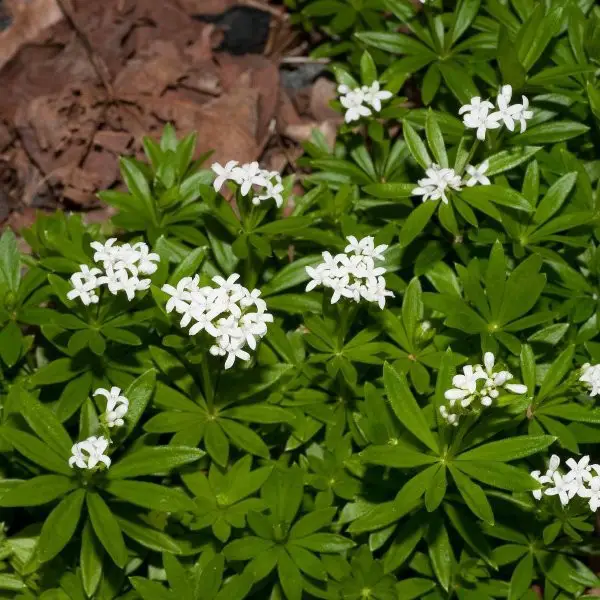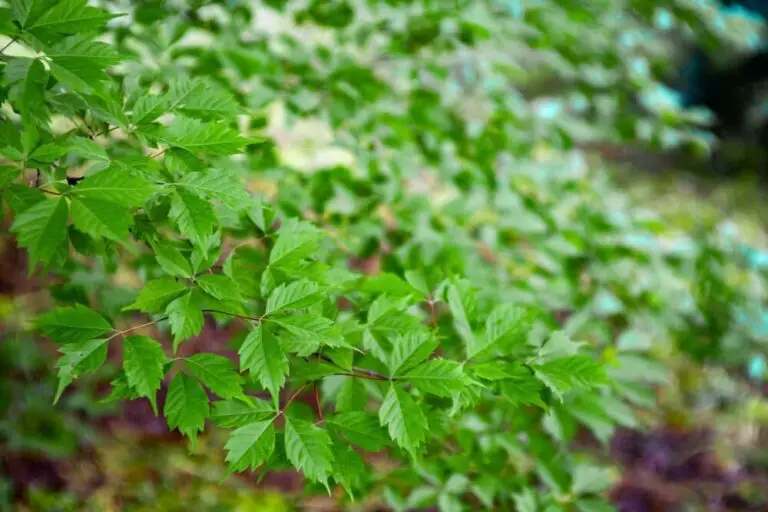16 Weeds That Look Like Grass
Weeds that masquerade as turf grasses pose a significant challenge when it comes to lawn care. One of the most striking features of these impostors is their ability to blend seamlessly with their surroundings, often establishing their roots earlier than the actual grass. This can be particularly problematic, as they can quickly deplete the nutrients intended for the grass, leaving it struggling to thrive.
As a result, it’s essential to develop a keen eye for identifying common weeds that resemble grass. In this post, we’ll delve into the world of these disguised invaders and provide you with a comprehensive guide on how to recognize and control them.
What are weeds?
In the realm of agriculture, unwanted plant species are collectively referred to as weeds. These invasive growths are considered a nuisance due to their perceived competition with prized crops for essential nutrients. Just like cultivated plants, weeds can be classified into annual, biennial, and perennial categories.
Some classification systems also take into account their natural habitats, such as facultative weeds that typically thrive in wild environments but can adapt to cultivate lands through the agency of wildlife. In contrast, obligate weeds are uniquely suited to flourish in cultivated areas and disturbed ecosystems.
Weeds that look like grass
To dive directly into the main point of this article, let’s explore some common ‘grass-like’ weeds that exhibit distinct features, growth patterns, and rooting habits. A key aspect to note is the differences in these characteristics, which can aid in identification and management. This section will highlight the unique qualities, development habits, and establishment periods of these weeds.
Annual Bluegrass (Poa annua)
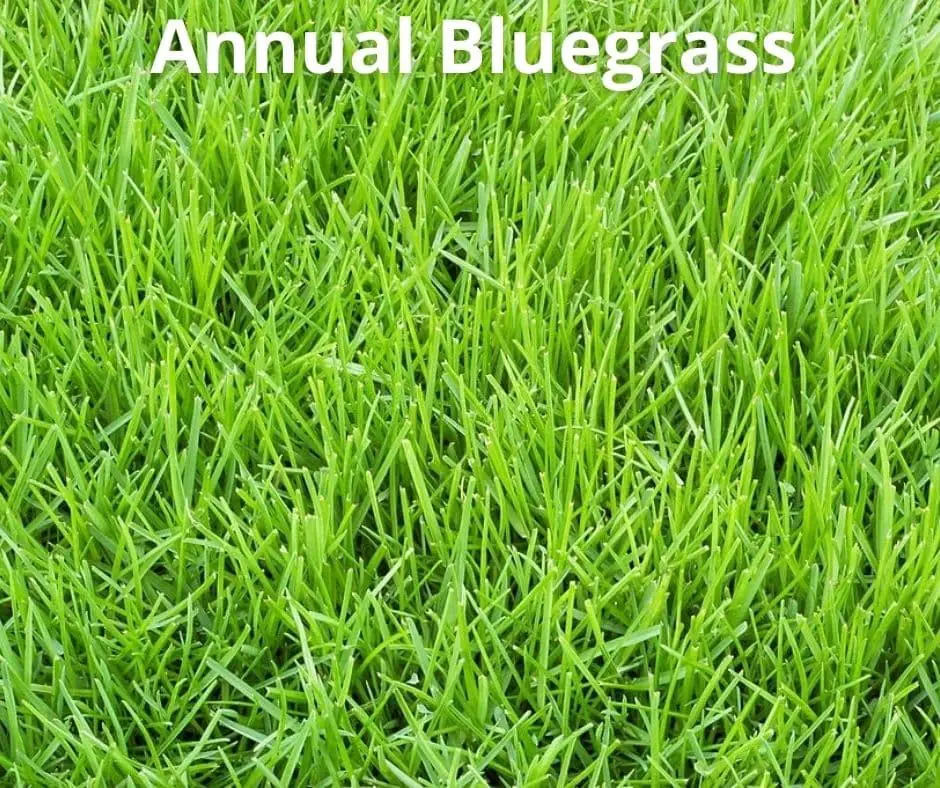
While often confused with Kentucky bluegrass, this particular type of grass can be distinguished by its vibrant green hue and finer texture. Its ligule is also noticeably longer, helping to secure the base of the clump. The leaves themselves are more curved in shape than those of Kentucky bluegrass, and this variety excels in damp, cool environments. As summer approaches, the blades transform into papery, brown grass. To prevent its spread, it’s essential to apply foramsulfuron prior to spring.
Blue Fescue (Festuca glauca)
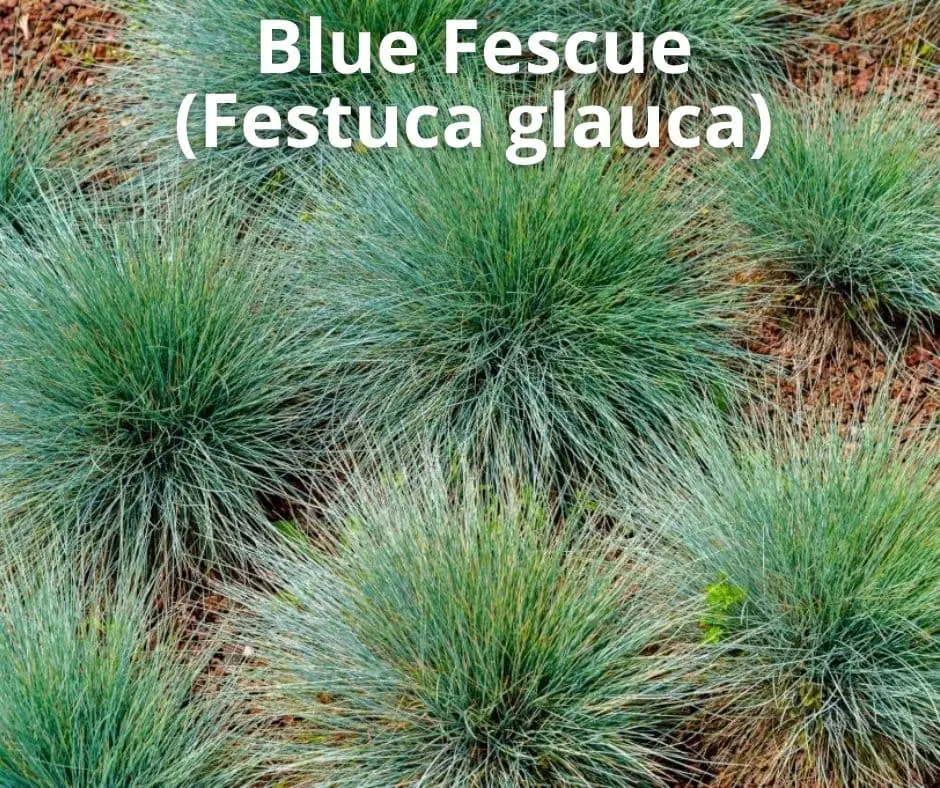
This ornamental grass is prized for its vibrant blue-green foliage and is often used in landscaping as an accent grass or ground cover. Its mounding habit can grow up to 12 inches tall, performing well in cool seasons. In the spring, the leaves produce bright green blooms that are sure to catch the eye. While it’s not to be confused with other fescue varieties like tall fescue, this one is a standout due to its unique features.
If you’re looking to control its spread, manual removal by the root or herbicides containing glyphosate can be effective methods.
Broom sedge (Andropogon virginicus)
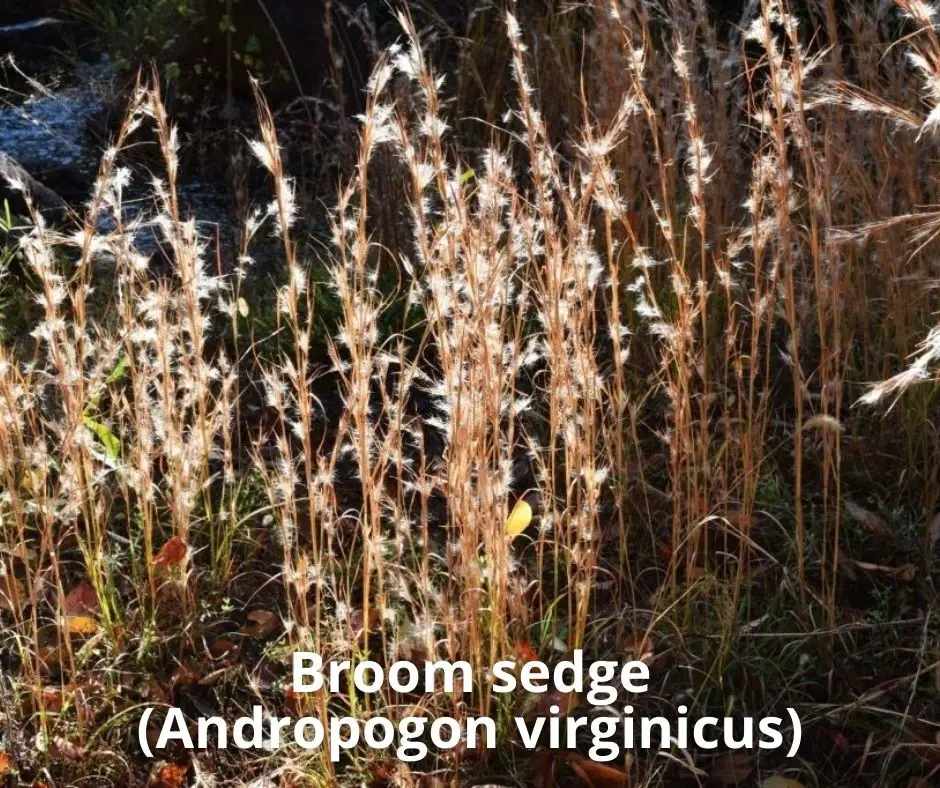
This perennial weed grass, with its unique characteristics, flourishes in environments with low acidity, poor soil fertility, and abundant sunlight. It’s commonly found in large quantities along railroad tracks and abandoned lots, where it grows in dense bunches. As the seasons change, this grass undergoes a notable transformation, transitioning from dull green to a striking coppery orange hue during autumn.
It’s essential to note that this weed is not a true sedge, which means vinegar-based solutions won’t be effective in controlling its growth. Furthermore, most pre-emergent herbicides are also unlikely to provide sufficient control. Instead, the most reliable method of managing this pesky grass would involve liming and proper turf fertilization.
Carpetgrass (Axonopus sp.)
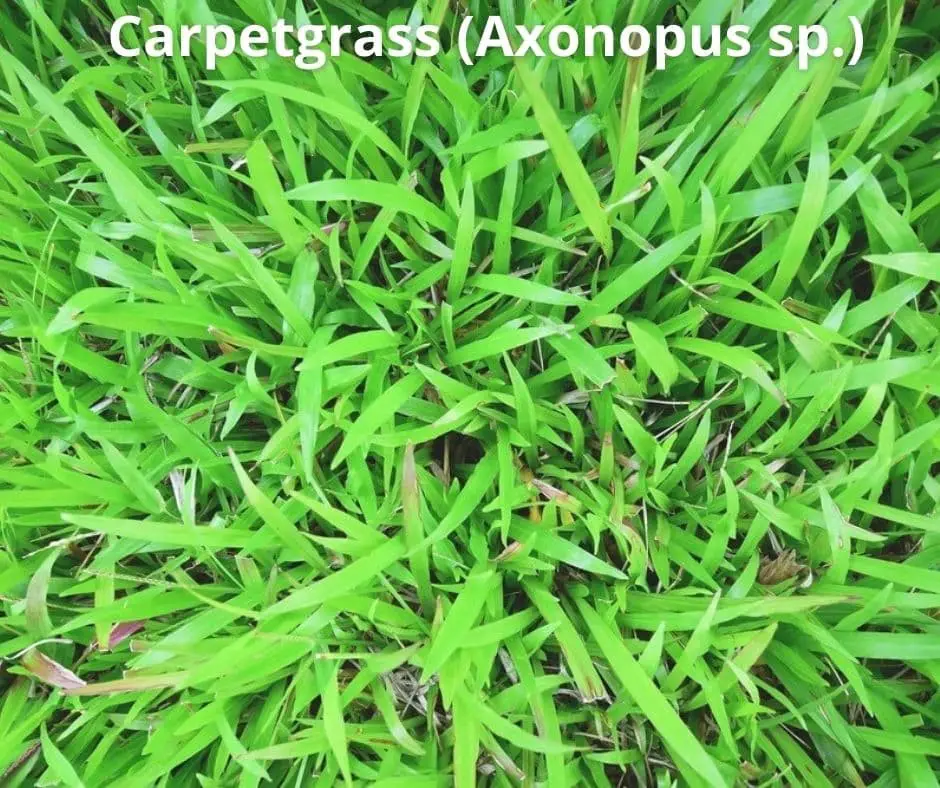
The Blanket Grass, also known as Nardoo, excels in environments with high acidity, where the conditions are wet, shady, and boggy. This warm-climate perennial can grow up to 12 inches tall, forming dense mats of dull green leaves with a coarse texture. During the summer months, it produces seed heads that resemble crabgrass. What’s remarkable about this species is its tendency to turn brown when temperatures drop slightly, signaling its sensitivity to temperature fluctuations.
In terms of control measures, oryzalin can be effectively used as a pre-emergent herbicide before spring. For those seeking natural solutions, salt and water combinations have been known to provide relief. This plant’s unique characteristics make it an interesting addition to the world of flora.
Crabgrass (Digitaria sanguinalis)
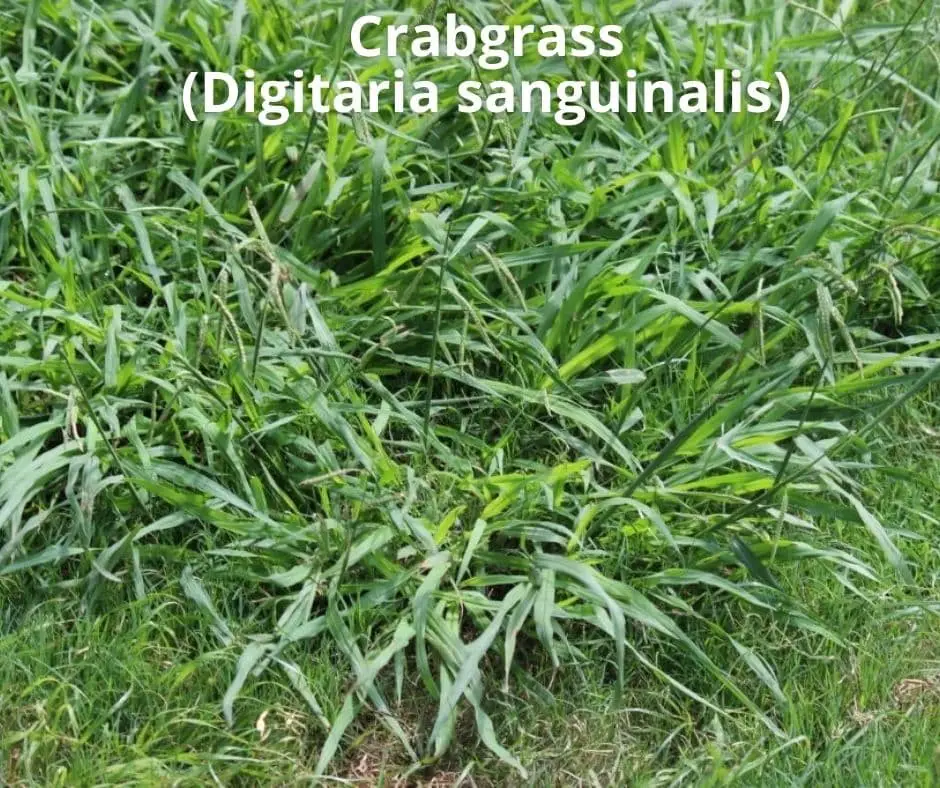
Crabgrass, the most common lawn weed, is characterized by its rapid and horizontal growth habit. Its distinctive ‘crab-like’ appearance earns it this name, with leaves sporting a bright green color and a prominent central fold that sets it apart from other grasses. This invasive species thrives in hot and humid climates, but fortunately, there are effective ways to control its spread. A 5% acidity vinegar solution, applied three times a week before spring, can be used to curb crabgrass growth.
Additionally, herbicides containing quinclorac have been shown to be effective deterrents. With the right strategies in place, you can enjoy a beautiful and weed-free lawn.
Creeping bentgrass (Agrostis palustris)
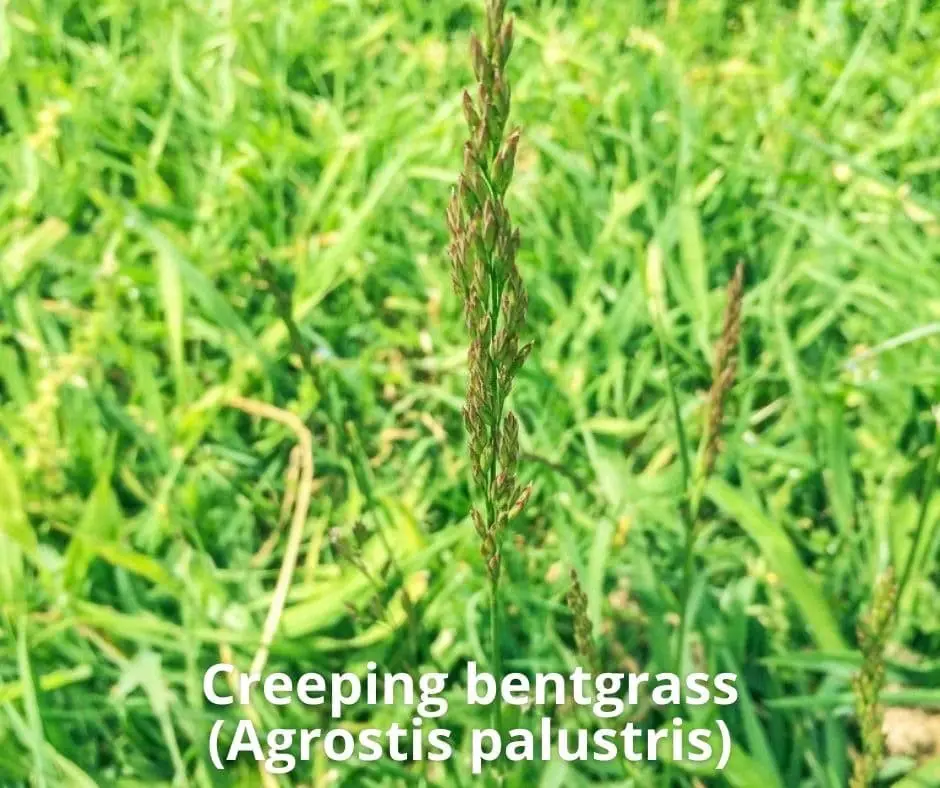
A notable characteristic of this type of weed grass is its fine textured and dense matting habit, which manifests as gray-green patches of growth that spread aggressively via underground stolons. As such, it’s often recognizable by the vibrant green spots it forms in turf. In contrast to other weed grasses, this species is surprisingly well-tolerated in golf courses due to its puffy growth habit. However, during periods of extreme heat or temperature fluctuations, the leaves can turn brown.
To effectively manage this weed grass, mesotrione-based herbicides have been shown to be particularly effective.
Dandelion (Taraxacum)
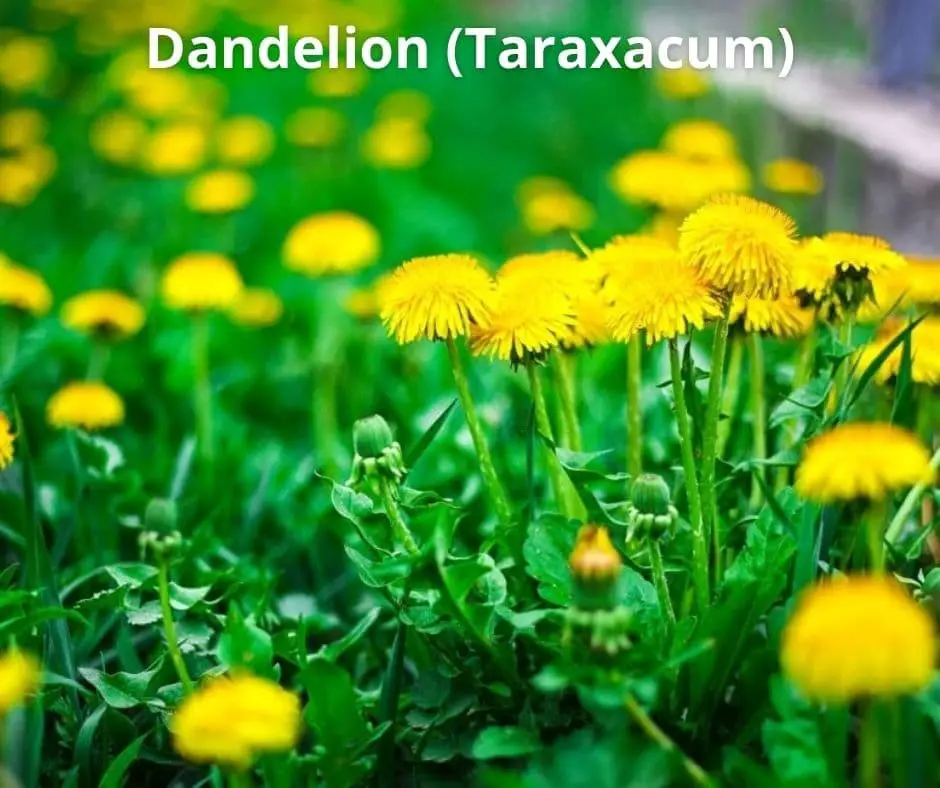
Dandelion is a broadleaf perennial that reaches 12 inches in height, characterized by its long taproots and leaves resembling crabgrass. As it matures, this invasive lawn weed produces yellow puffballs that readily disperse with the wind, allowing it to spread rapidly. To effectively manage dandelions, regular mulching can help prevent encroachment into your garden or lawn.
Alternatively, you can manually remove them by pulling out the roots, or utilize herbicides specifically designed to target this unwanted weed without harming turf grass.
Foxtail (Setaria sp.)
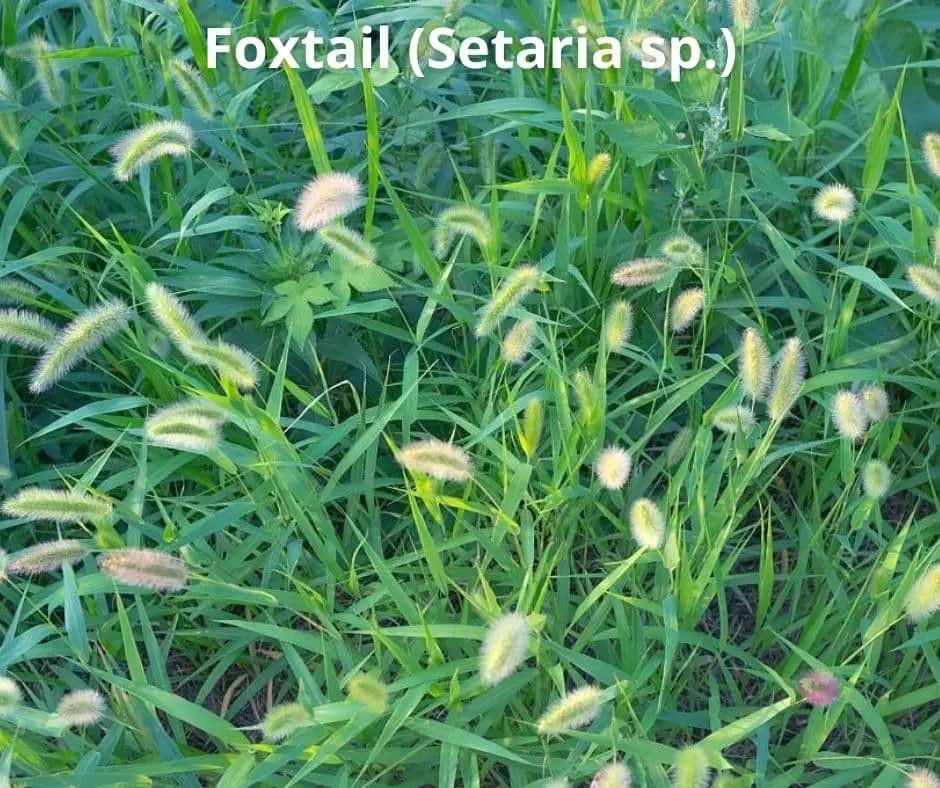
Foxtail weed grass is another ubiquitous invasive species that thrives in a variety of soil conditions, producing distinctive bottle brush flowers with spiky seedheads during the summer months. Its sprawling habit allows it to form large clumps of grass, often measuring over 40 inches across. There are three primary species of foxtail: yellow, green, and giant foxtail.
When it comes to treating this pesky weed, vinegar dousing can be effective for small patches, but larger infestations may require repeated applications of non-selective herbicides or those containing acetochlor during the entire summer season.
Goosegrass (Eleusine indica)
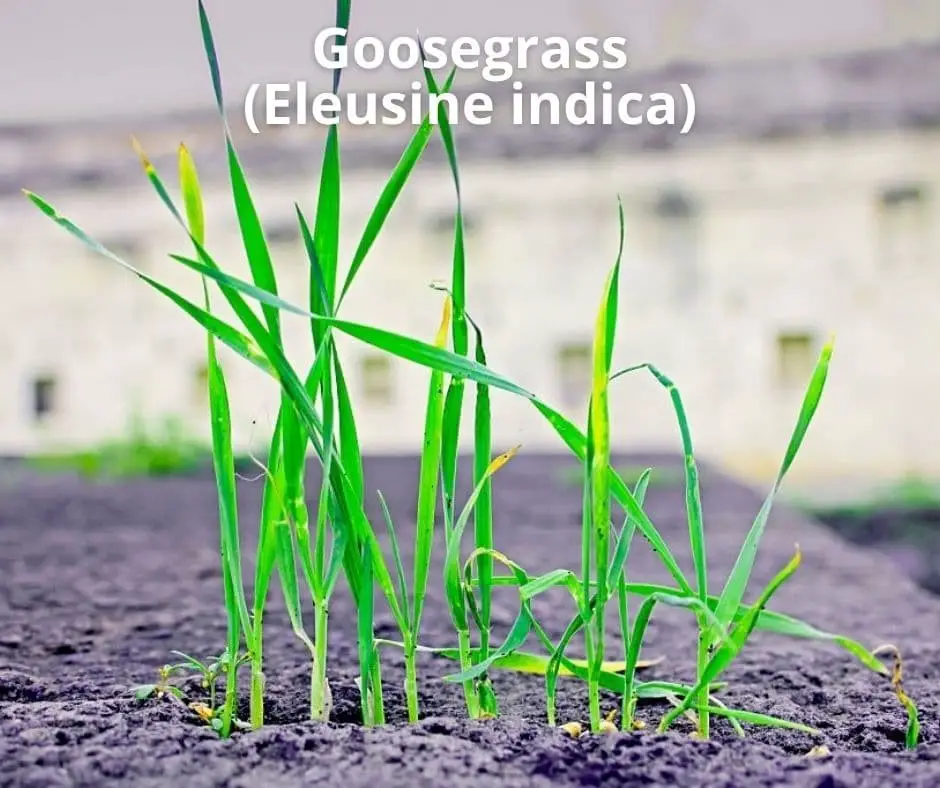
The annual weed grass is characterized by its striking silver-green hue. Its unique flowerhead is comprised of finger-like leaf strands that radiate outward in a pattern reminiscent of a goose’s foot, similar to the way crabgrass spreads. This invasive species can grow up to 16 inches tall and thrives in poor-draining and compacted soils. To effectively deter its growth, it’s essential to prioritize soil aeration, particularly during the spring season.
For those seeking chemical solutions, herbicides containing trifluralin, benefin, mesotrione, or dithiopyr have been shown to be effective.
Johnsongrass (Sorghum halepense)
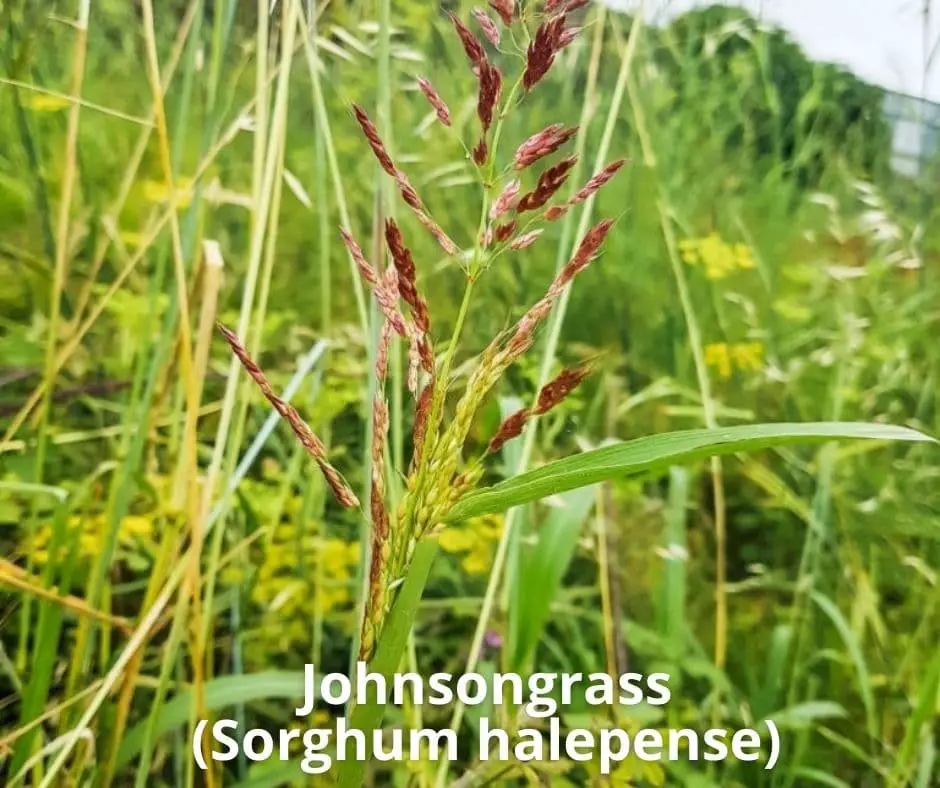
Johnson grass initially appears as corn seedlings due to its striking resemblance. Its impressive height of 7 feet is matched only by the vibrant green leaves that feature a prominent white vein running along their centers. Measuring approximately 1-2 inches in width, these leaves are adorned with purple flowers that bloom from spring through the first frost.
For those seeking non-chemical control methods, uprooting the plants by their roots and subsequently applying vinegar to the area can effectively suppress future growth. Alternatively, re-sodding or tilling the soil come fall can expose the rhizomes to cooler temperatures, ultimately leading to their demise. In instances where larger patches are present, herbicides containing sulfosulfuron may be employed.
Nutsedge (Cyperus sp.)
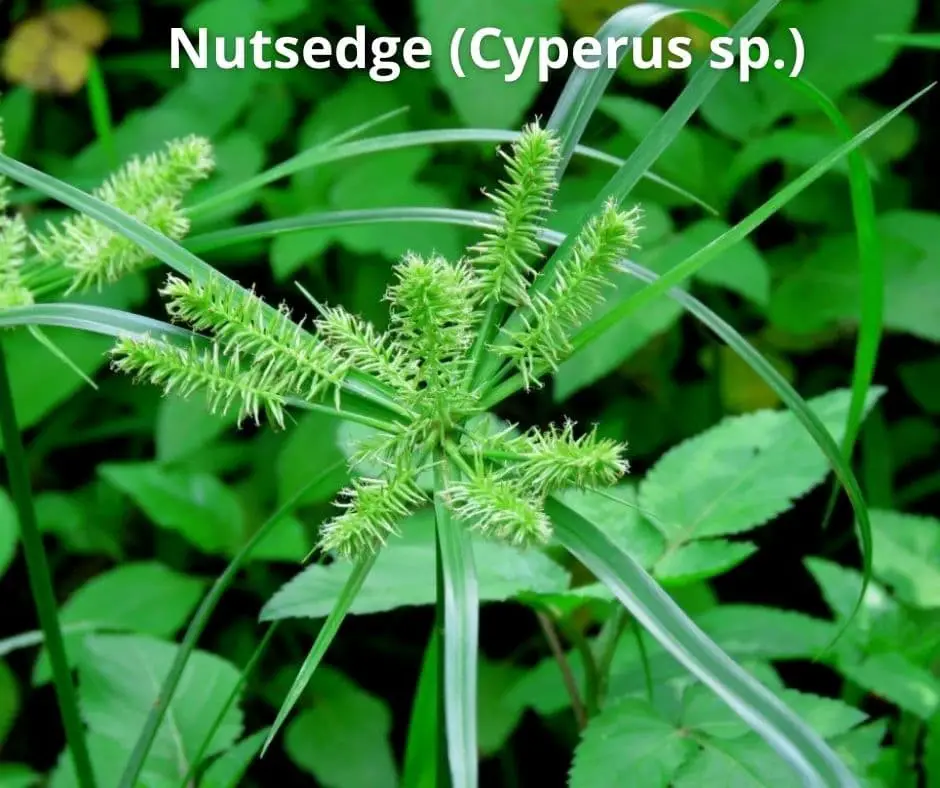
The two species of perennial nutsedge, characterized by their purple or yellow hues, are notorious for thriving in cool, damp environments. Their long, slender leaves are a hallmark of this invasive weed. As the summer months arrive, they produce brush-like flowers that transition from yellow to a deep purplish-red shade. The plant’s common name stems from the nutlets found within its root clumps.
Unfortunately, overwatering can fuel its aggressive growth, making it essential to employ post-emergent herbicides containing sulfosulfuron as the most effective means of control.
Path Rush/Slender rush (Juncus Tenuis)
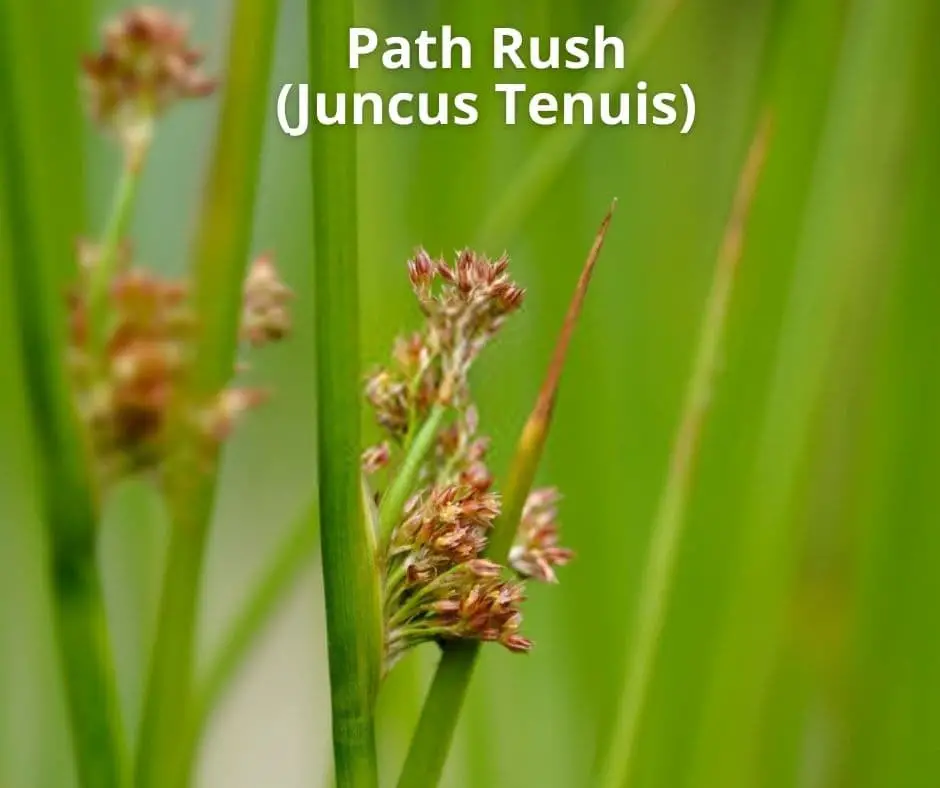
Path rush, also known as juncus effuses, is a common sight in abandoned lots and fields. It can grow up to 2 feet tall, characterized by its slender stems, narrow and long leaves that stand upright. Its aggressive growth habit from rhizomes makes it notoriously difficult to control and permanently eradicate. In fact, path rush has developed resistance to herbicides, requiring manual digging of the root system if you hope to gain the upper hand.
However, a simple mowing routine can help keep them under control by cutting off seed heads and preventing further dispersal.
Quackgrass (Elymus repens)
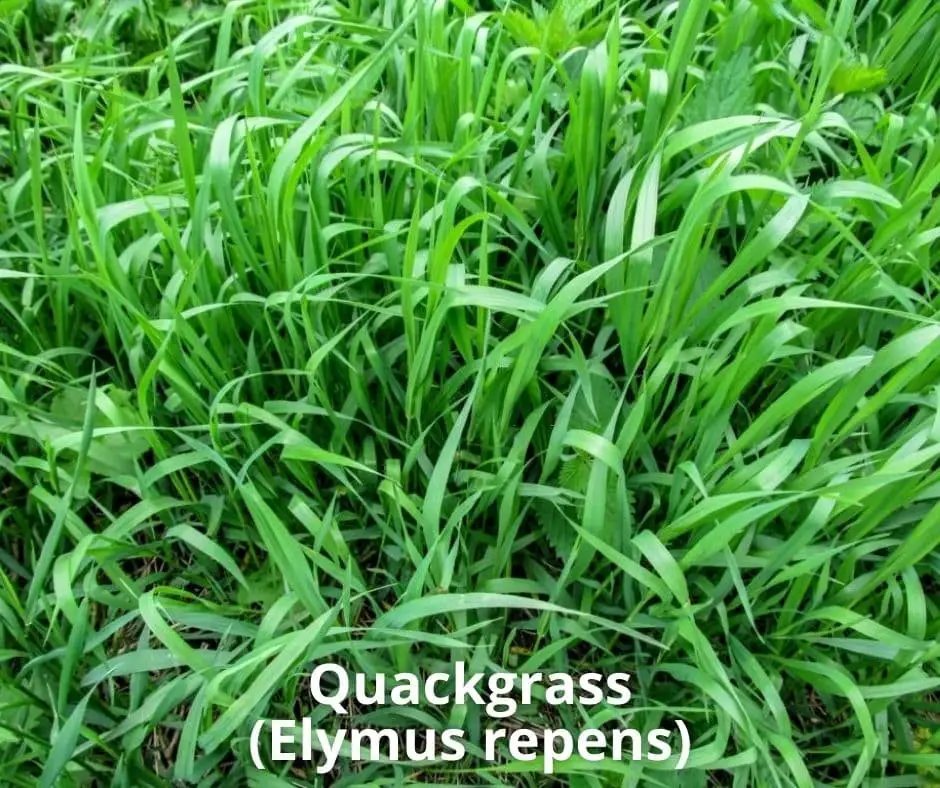
Common crouch, also known as cool climate weed grass, is distinguished by its distinctive finger-like leaves clustered on multiple stems and extending far beyond the stem. It grows in ash blue-green patches, showcasing its rhizomatic growth pattern. While non-selective herbicides can be considered for treatment, they should be used with caution to avoid harming surrounding turf grasses.
A more effective approach may involve digging up the roots and covering the area with black plastic during summer’s peak heat.
Smooth Bromegrass (Bromus Ramosus Ramosus)
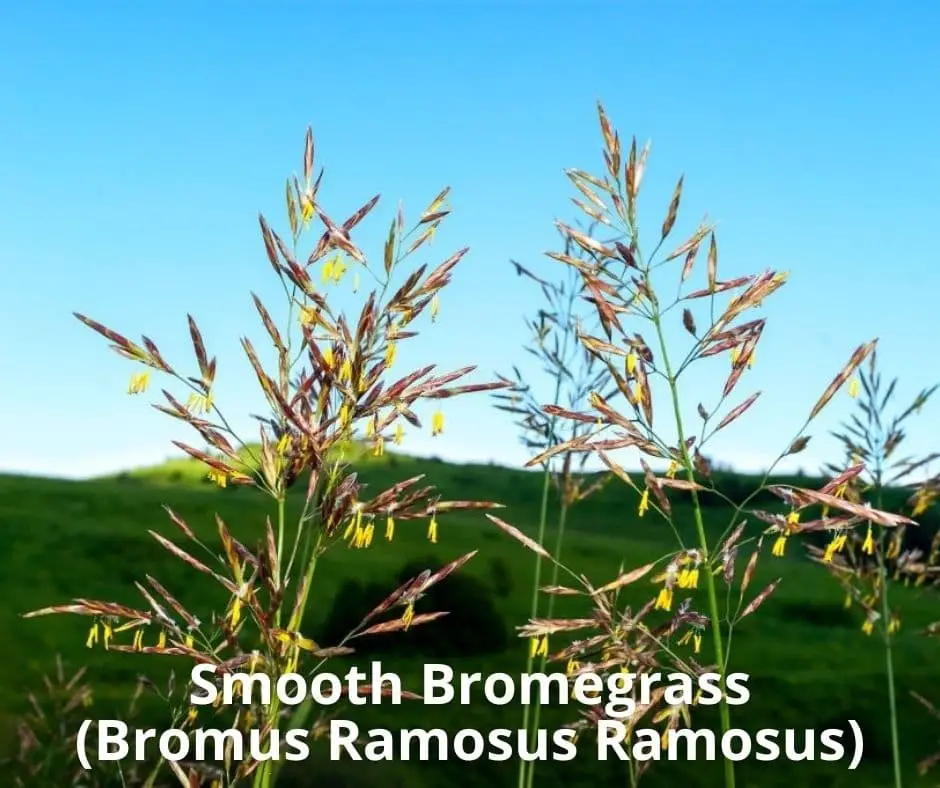
Bromegrass is notorious for its rapid spread and invasive nature, thanks to its rhizomatic growth pattern. Once the roots take hold, it can be extremely challenging to eradicate completely. However, there is a silver lining: regular mowing can significantly curb their annual growth, ultimately leading to natural decline. To further hinder their proliferation, it’s crucial to maintain a healthy lawn.
If you do notice uncontrolled or aggressive growth, consider utilizing pre-emergent herbicides specifically designed for turf grass, ensuring your lawn remains safe and unaffected.
Yellow Salsify (Tragopogon Dubius)
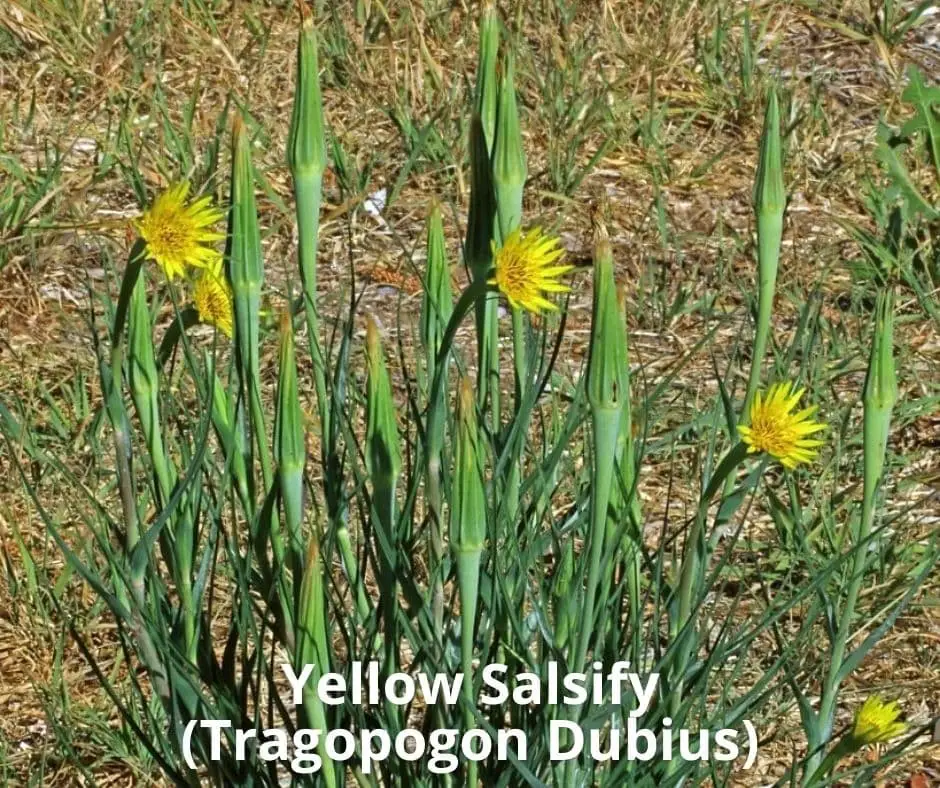
A ubiquitous sight in its native habitats of Asia and Europe, this invasive species takes on a different character when introduced to North America. Its preference for sunny locations is matched only by its vibrant display of yellow flowers during the summer months, followed by the dramatic appearance of large puffballs as fall dawns.
Less well-known, however, is the fact that in certain regions of southern and central Europe, as well as north and central Asia, the roots of this plant are considered a traditional delicacy, boasting a flavor profile eerily similar to oysters. To effectively manage its spread, gardeners may find it necessary to dig up the entire root system or maintain a regular mulching schedule to promote healthy lawn growth.
Wild garlic (Allium ursinum)
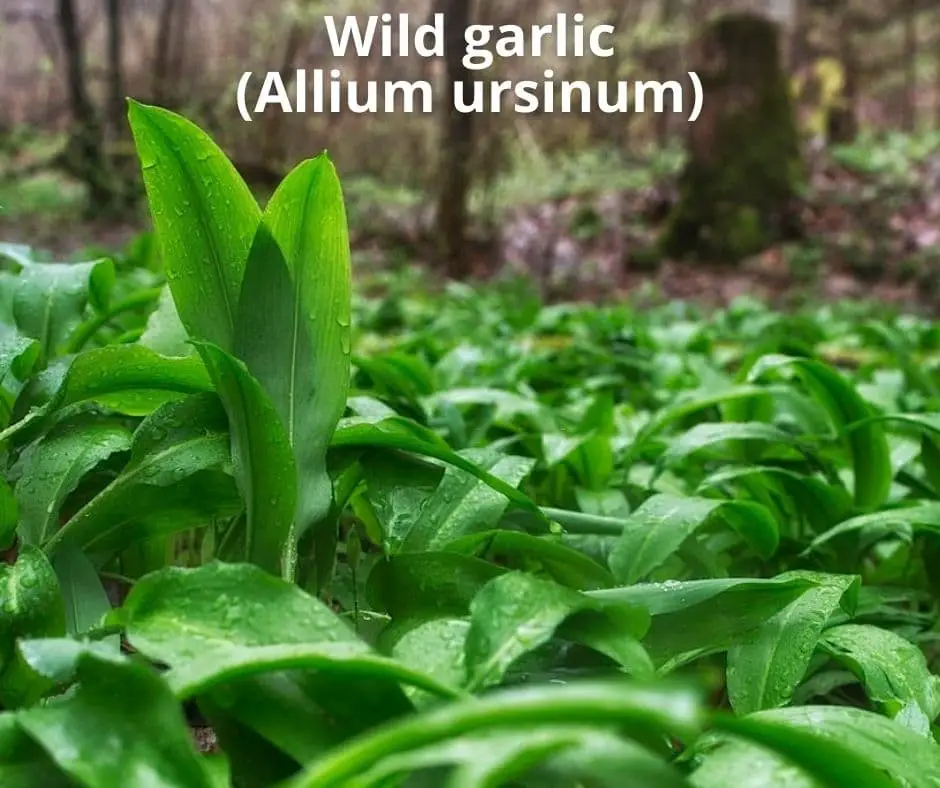
Wild garlic is a rapidly spreading weed that grows tall and dense, emitting a strong garlicky aroma throughout the spring, making it easily identifiable. It typically grows in clumps, reaching heights greater than your turf grass. Notably, as they grow from bulbs, they can be uprooted and consumed as a culinary ingredient. Wild garlic’s growth cycle involves an active period during both spring and fall, followed by dormancy throughout the summer months.
To effectively control wild garlic, it is essential to remove the bulbs or apply a suitable herbicide for permanent eradication. It is crucial not to confuse wild garlic with its close relative, wild onions.
FAQs
What weeds do not look like grass?
When it comes to distinguishing between weeds and ground cover plants, it’s essential to familiarize yourself with the common impostors. To help you make accurate identifications, here’s a comprehensive list of potential lookalikes: Oxalis, Bindweed, White clover, Creeping Charlie, Lamb’s Quarter, Dayflower, Purslane, Wild violet, Smartweed, Quickweed, Pig weed, Canada thistle, Knot weed, Pokeweed, Black nightshade, Henbit, Nettle, Prostrate spurge, and Chickweed.
Keep in mind that Ragweed is another common weed that can be easily mistaken for a ground cover plant.
What weeds are the hardest to kill?
Before you embark on a weed-killing mission, it’s essential to familiarize yourself with the most resilient and challenging weeds to eradicate. To help you prepare for an unexpected infestation, we’ve compiled a comprehensive list of the toughest weeds to banish from your lawn or garden.
This lineup includes notorious culprits such as Bittercress, Burdock, Chickweed, Crabgrass, Creeping Charlie, Clover, Cudweed, Dandelion, Field Bindweed, Ground Ivy, Kudzu, Johnson grass, Lamb’s Quarter, Nutsedge, Purslane, Quack grass, and Water hyacinth.
What are the worst weeds?
While it’s true that not all weeds are invasive globally or even within specific regions of the US, there are certainly some notorious offenders that can cause trouble in any garden or lawn. Among the most unwanted weeds are wild violet, Virginia buttonweed, ground ivy, Canada thistle, dandelion, crabgrass, clover, mile-a-minute weed, spotted spurge, and wood sorrel.
These pesky plants can quickly overtake and outcompete desirable flora, making them a significant concern for gardeners and lawn enthusiasts.
Are there advantages of weeds?
While often viewed as unwanted intruders, weeds in gardens and lawns actually possess several unexpected benefits. For instance, certain species are capable of bringing to the surface water, organic matter, and nutrients that would otherwise remain buried deep within the soil. As they grow, these weeds can enhance the soil’s fertility by providing sustenance for microbes and plants alike.
Additionally, some weeds play a vital role in reducing soil compaction and preventing erosion, ensuring that the underlying layers of earth remain intact. Furthermore, weeds serve as natural indicators of garden health, alerting us to potential imbalances in the soil composition that require attention. Interestingly, certain weeds are even capable of balancing the nutritional profile of the soil over extended periods – a process that can span years or even decades.
Moreover, these unwanted invaders can foster biodiversity by providing sustenance for local microbes, animals, and insects.
When is the best time to pull off weeds?
When it comes to tackling weeds through uprooting, timing is everything. Optimal conditions for this method exist during periods of damp and moist soil, typically during specific seasons or climates. However, when infestations have grown out of control, herbicides may be the most effective solution. When resorting to chemicals, ensure you select those deemed safe for turf grass, thereby minimizing any potential harm to your lawn.
How do you kill weeds naturally?
Instead of relying on herbicides, there are several DIY methods you can use to naturally eradicate weeds from your garden or lawn. One approach is manual removal by pulling the weeds out by hand, a simple yet effective technique. For a more targeted approach, you can try using cornmeal as a natural pre-emergent weed suppressor. Regular mulching can also help crowd out weeds and prevent them from growing.
Another option is to use a vinegar solution directly on the weeds, which can be an effective and non-toxic way to kill them. For a more dramatic effect, you can cover the weeds with newspaper or scald the soil with boiling water. Alternatively, you can apply table salt to the base of the plant or use herbicidal soap mixed with vinegar. Finally, if you’re willing to invest some time and effort, you can even try using a weed torch (just be sure to research proper usage first).
What are the best herbicides to use for hard to kill weeds?
While it’s true that some herbicides are tailored to specific weeds, there are also all-purpose weed killers that can effectively eliminate a wide range of unwanted vegetation. These products often rely on the potency and combination of their active ingredients to deliver broad-spectrum control. When selecting an herbicide for your lawn or garden, consider the types of weeds you’re trying to eradicate.
Among the many options available, some popular all-around weed killers include Spectracide’s Weed and Grass Killer, Ortho’s Weed-B-Gone, Roundup’s Weed and Grass Killer, Green Gobbler’s Vinegar Weed and Grass Killer, Roundup Pro Concentrate, Compare ‘N Save Weed Killer, and RM43 Weed Preventer. For more persistent or hard-to-kill weeds, tools like the Flame King Propane Torch Weed Burner can provide an alternative solution.
What chemical do professionals use in killing weeds?
When it comes to eliminating weeds, there are two primary categories of herbicides: pre-emergent and post-emergent. To effectively utilize these chemicals, it’s crucial to understand which types of weeds each can control. The professional weed killing industry relies heavily on herbicides containing compounds such as Trifluralin, Oryzalin, Glyphosate, Sethoxydim, and Fluazifop Butyl.
Conclusion
Knowing the different types of grass is crucial because some may be stifling the growth of your turf grass. Moreover, identifying weed grass is a sign of poor lawn health, and addressing this issue can lead to a permanent solution for unwanted growth. While it’s essential to recognize the various weed grasses that may inhabit your lawn, understanding their characteristics and learning control methods is key to maintaining a healthy and balanced environment.


